(b. Dec. 12, 1863, Löten, Nor.--d. Jan. 23, 1944, Ekely, near Oslo)
Norwegian painter and printmaker whose intense, evocative treatment of psychological and emotional themes was a major influence on the development of German Expressionism in the early 20th century. His painting The Cry (1893) is regarded as an icon of existential anguish.
A gifted Norwegian painter and printmaker, Edvard Munch not only was his country's greatest artist, but also played a vital role in the development of German expressionism. His work often included the symbolic portrayal of such themes as misery, sickness, and death. The Cry, probably his most familiar painting, is typical in its anguished expression of isolation and fear.
Munch was born on Dec. 12, 1863, in Loten, Norway. He grew up in Christiania (now Oslo) and studied art under Christian Krohg, a Norwegian naturalistic painter. Munch's parents, a brother, and a sister died while he was still young, which probably explains the bleakness and pessimism of much of his work. Paintings such as The Sick Child (1886), Vampire (1893-94), and Ashes (1894) show his preoccupation with the darker aspects of life.
Munch traveled to Paris in 1885, and his work began to show the influence of French painters--first, the impressionists, and then the postimpressionists--as well as art nouveau design. Like many young artists Munch reacted against conventional behavior, and in 1892 he took part in a controversial exhibit in Berlin. His circle of friends included several writers, one of whom was the Norwegian playwright Henrik Ibsen. Munch designed the sets for several of Ibsen's plays.
Between 1892 and 1908, Munch spent much of his time in Paris and Berlin, where he became known for his prints--etchings, lithographs, and woodcuts. After 1910 Munch returned to Norway, where he lived and painted until his death. In his later paintings Munch showed more interest in nature, and his work became more colorful and less pessimistic. Munch died in Ekely, near Oslo, on Jan. 23, 1944. He left many of his works to the city of Oslo, which built a museum in his honor.
노르웨이 부유한 집안에서 태어난 뭉크는 어머니가 폐결핵으로 사망하고 누나와 세 동생이 병에 걸려 죽거나 입원하고 그 역시 질병에 시달리며 죽음, 불안, 공포, 고통 등 인간 내면 심리세계를 그림.
"나는 숨쉬고 느끼고 사랑하고 고통받는 사람들을 그리고 싶다"
현대 사회 상황에 대한 환멸이나 인간 소외, 갈등 등의 긴장을 강조하는 표현방법, 정신적 고뇌를 상징하는 왜곡된 형태와 강렬한 색채로 심리적 긴장을 비극적으로 표현. 이것은 독일 표현주의의 원동력이 되었다.
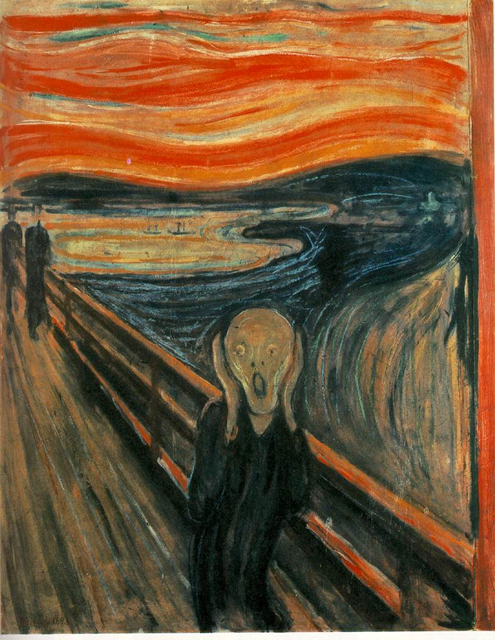
1893; 150 Kb; Casein/waxed crayon and tempera on paper (cardboard), 91 x 73.5 cm (35 7/8 x 29"); Nasjonalgalleriet (National Gallery), Oslo
우울한 뭉크가 어느 날 저녁노을의 느낌을 핓빛 하늘속에 알수없는 두려움으로 절규를 하게 만든 그 순간을 그림으로 표현하였다.
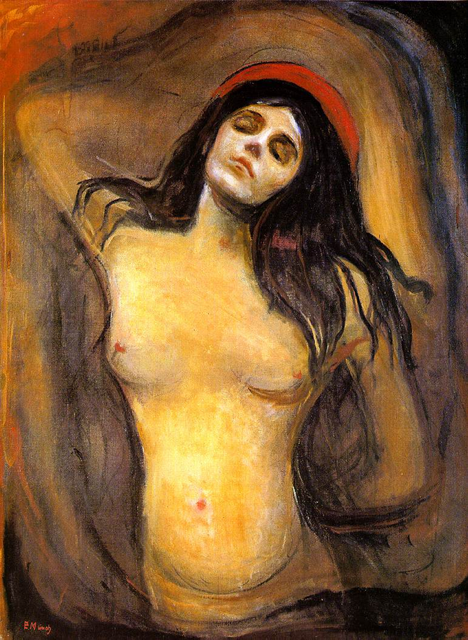
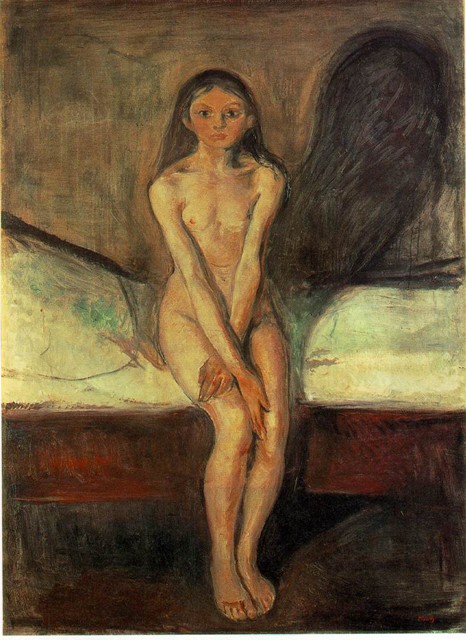
사춘기 소녀의 두려움과 근심.

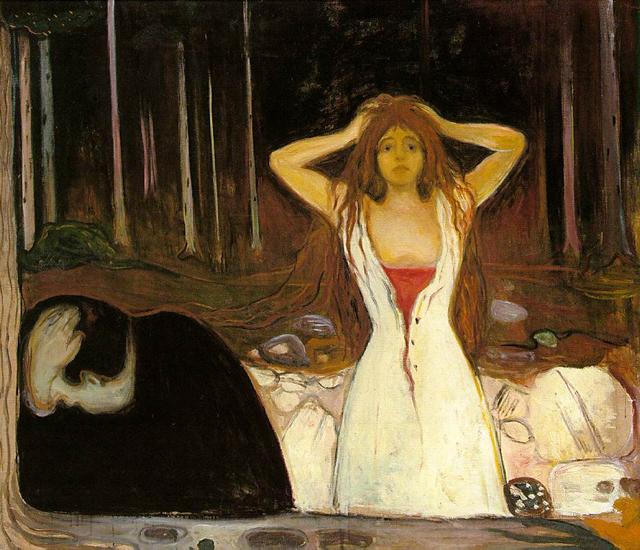

인생의 세단계- 소녀에서 여인에서 죽음으로...
마치 중세의 작품처럼, 시간 차이가 있는 사건들을 한 화면에 동시에 그리는 종교미술의 특징을 이용한 것인지, 동일 인물이 3번 등장하며 인생의 단계를 보여준다.
자연의 생성과 소멸처럼 인간의 죽음으로 향한
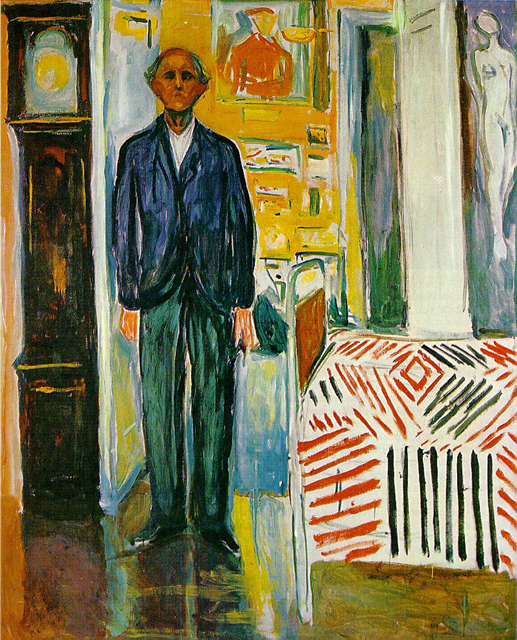
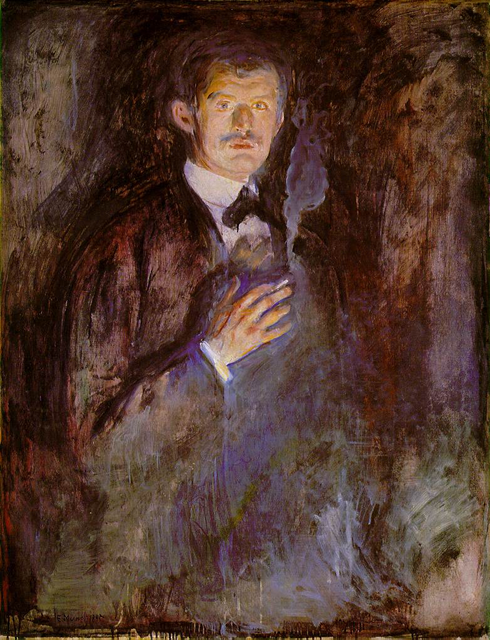

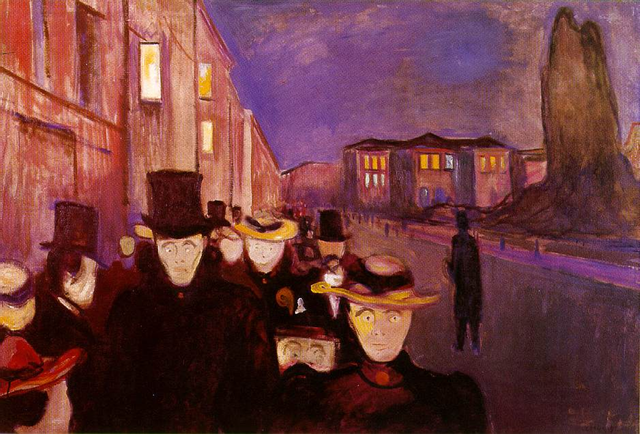
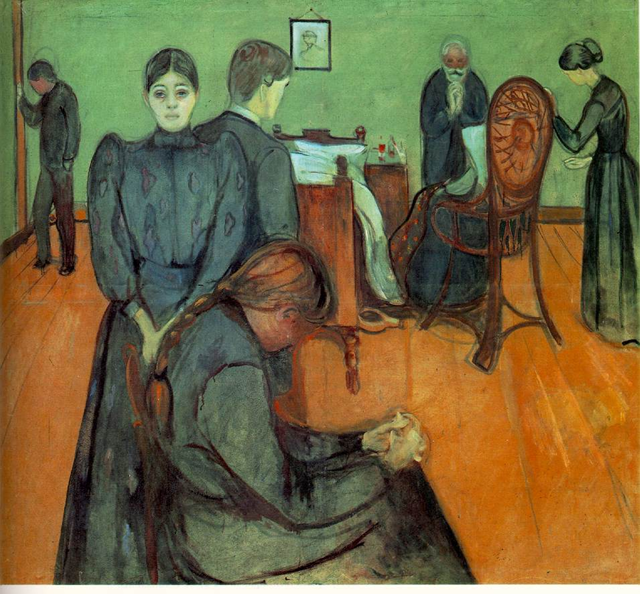

<삶의 춤>노르웨이는 여름에는 해가 지지않고, 겨울에는 해가 뜨지 않는다. 낮과 밤의 경계도 모호하여 분위기가 칙칙하게 보여진다. 왼쪽의 젊은 여자, 중앙 붉은 여자, 오른쪽 나이든 여자가 한 여인이다...한 화면에 인생의 흐름.

Edvard Munch. Moonlight. 1893. Oil on canvas. 140.5 x 135 cm. Nasjonalgalleriet, Oslo, Norway.



'History of Arts > 19C' 카테고리의 다른 글
| Toulouse-Lautrec, Henri de (0) | 2007.12.04 |
|---|---|
| Modigliani, Amedeo (0) | 2007.12.03 |
| Austria Expressionism (0) | 2007.12.01 |
| 후기 인상주의-쇠라 (1) | 2007.11.14 |
| Auguste Rodin (1) | 2007.11.13 |


